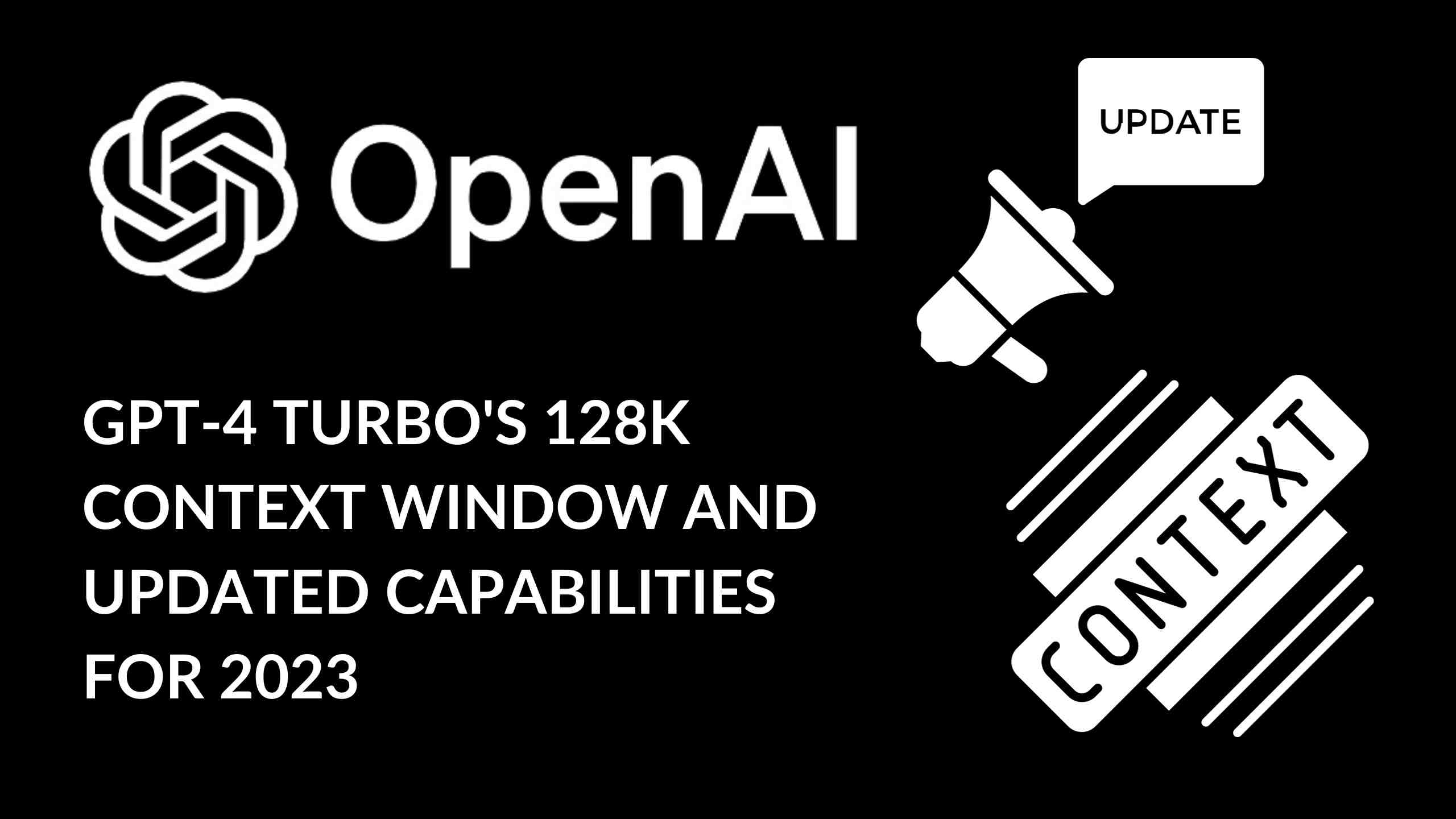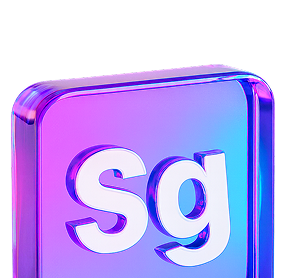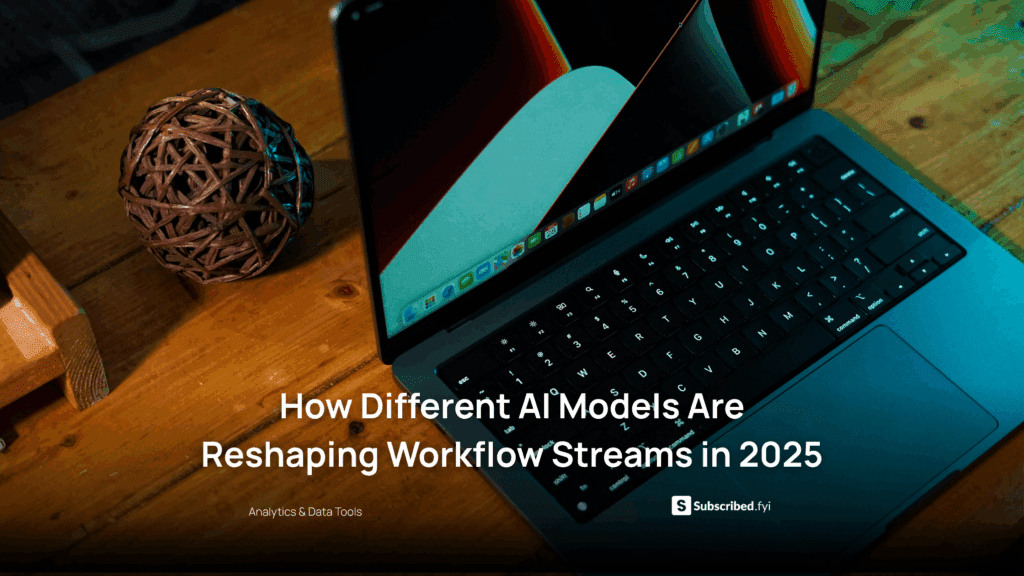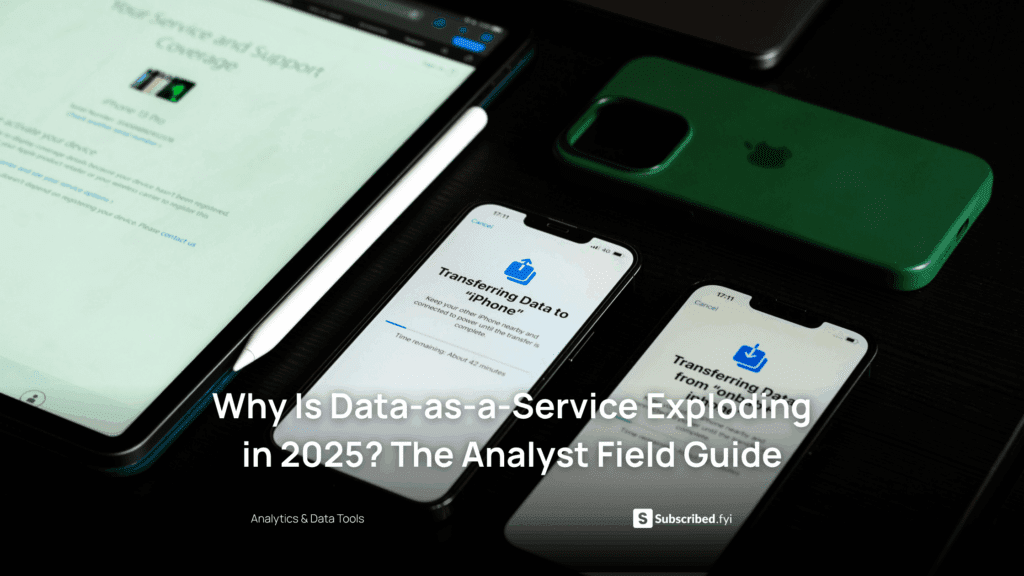Unlock Infinite Knowledge: GPT-4 Turbo’s 128K Context Window and Updated Capabilities for 2023
- AI Image Generators Software AI Writing Assistant Popular Tools AI Tools


Unlock Infinite Knowledge: GPT-4 Turbo’s 128K Context Window and Updated Capabilities for 2023
OpenAI is at it again, pushing the boundaries of AI technology. With the recent announcement at DevDay, they’ve unveiled an array of exciting developments that promise to revolutionize the way we interact with AI. In this article, we’ll dive into the key highlights of these announcements, including the groundbreaking GPT-4 Turbo, the Assistants API, and much more.
The Power of GPT-4 Turbo
GPT-4 Turbo is the latest iteration of OpenAI’s language models. Building on the foundation of GPT-3, GPT-4 Turbo is more capable and cost-effective. One of its most remarkable features is its extended context window. With an impressive 128K context, this AI model can comprehend the equivalent of over 300 pages of text in a single prompt. This increased capacity opens up countless possibilities for more comprehensive, context-aware applications.
But that’s not all; GPT-4 Turbo comes at a significantly reduced cost compared to its predecessor. You’ll be delighted to know that input tokens are now three times cheaper, priced at just $0.01, and output tokens are two times cheaper, at $0.03. This cost reduction opens doors for a wider range of applications to harness the power of GPT-4 Turbo.
Function Calling Updates
Function calling is a feature that empowers developers to describe functions and APIs to AI models. With recent improvements, GPT-4 Turbo can intelligently output JSON objects containing arguments to call these functions. But here’s the exciting part – you can now call multiple functions in a single message. For instance, you can send a single message requesting multiple actions, streamlining the interaction with the model.
The accuracy of function calling has also received a boost with GPT-4 Turbo, making it more reliable and responsive. It’s a promising development for those looking to create seamless AI-powered interactions in their applications.
Enhanced Instruction Following and JSON Mode
GPT-4 Turbo excels in tasks that require precise instruction following. Whether you need it to generate specific formats, like responding in XML, or other structured data, it delivers with finesse. And here’s an added bonus: the new JSON mode ensures the model’s responses are valid JSON, simplifying data exchange and processing.
Moreover, GPT-4 Turbo introduces the “response_format” API parameter, allowing you to constrain the model’s output to generate syntactically correct JSON objects, making data handling even more efficient.
Reproducible Outputs and Log Probabilities
OpenAI is dedicated to offering developers greater control over AI models. The new “seed” parameter in GPT-4 Turbo introduces reproducibility, making the model return consistent responses most of the time. This is a powerful tool for debugging, comprehensive unit testing, and fine-tuning the AI’s behavior. It’s a feature OpenAI uses for its own unit tests, highlighting its value for developers.
In addition, OpenAI plans to introduce a feature that returns log probabilities for the most likely output tokens generated by GPT-4 Turbo, enhancing capabilities like autocomplete in search experiences.
Updated GPT-3.5 Turbo
But wait, there’s more! OpenAI is not only launching GPT-4 Turbo, but they’re also updating GPT-3.5 Turbo. This new version supports a 16K context window by default.
Applications using the older GPT-3.5 Turbo model name will be automatically upgraded to the new model on December 11, 2023. However, older models will still be accessible by passing the previous model name until June 13, 2024.
The enhancements in GPT-3.5 Turbo include improved instruction following, JSON mode, and parallel function calling, particularly excelling in format-related tasks like generating JSON, XML, and YAML.
Explore the Assistants API
One of the most exciting developments is the release of the Assistants API, offering developers the tools to create agent-like experiences within their applications. Assistants are specialized AIs with specific instructions, empowered with extra knowledge, and the ability to call models and tools to perform tasks.
The Assistants API introduces several capabilities, including the Code Interpreter and Retrieval, along with function calling. These capabilities help simplify the process of building high-quality AI applications by handling complex tasks you would otherwise need to manage yourself.
A unique feature is the introduction of persistent and infinitely long threads, allowing developers to seamlessly manage context within the Assistants API. This innovation takes context management to the next level.
Assistants can call tools like the Code Interpreter, which can write and run Python code in a sandboxed environment, process data, and generate graphs and charts. They can also access Retrieval to gather knowledge from external sources, optimizing the process based on OpenAI’s experience.
This opens up a wide range of possibilities, from creating data analysis apps to coding assistants and even innovative voice-controlled applications. The Assistants API leverages custom instructions and tools to deliver tailored AI experiences.
New Modalities in the API
GPT-4 Turbo takes AI to the next level by accepting images as inputs in the Chat Completions API. This paves the way for a plethora of applications, including generating image captions, in-depth image analysis, and document comprehension. For instance, apps like BeMyEyes are using this technology to assist individuals with visual impairments in their daily tasks.
Developers can access this vision feature by using “gpt-4-vision-preview” in the API, with pricing based on the input image size. This capability will become even more accessible as part of the stable release of GPT-4 Turbo.
Another exciting addition is DALL·E 3, which can now be integrated directly into applications via the Images API. This allows developers to programmatically generate images and designs. Companies like Snap, Coca-Cola, and Shutterstock are already using DALL·E 3 to enhance their customer experiences. With built-in moderation features, developers can ensure responsible usage of this powerful tool.
The Gift of Speech with TTS
AI is taking on a new dimension with the Text-to-Speech (TTS) API. Developers can now generate human-quality speech from text using this feature. With six preset voices and two model variants, “tts-1” for real-time use and “tts-1-hd” for the best quality, developers can bring human-like voices to their applications. Pricing starts at just $0.015 per input 1,000 characters.
Customization Opportunities
OpenAI is introducing experimental access to GPT-4 fine-tuning. While preliminary results indicate that fine-tuning GPT-4 may require more effort compared to GPT-3.5, this feature shows great promise. Developers actively using GPT-3.5 fine-tuning will soon have the option to explore the GPT-4 fine-tuning program within their console.
For organizations requiring extensive customization, OpenAI is launching the Custom Models program. This program offers an exclusive opportunity to collaborate with OpenAI researchers to train custom GPT-4 models for specific domains. This level of customization allows organizations to tap into the full potential of AI for their unique needs.
Lower Costs and Higher Rate Limits
OpenAI is on a mission to make AI more accessible. They have significantly reduced the prices across the platform, ensuring developers can achieve more with their budget. At the same time, they’ve doubled the tokens per minute limit for GPT-4 Turbo customers. These updates enable applications to scale efficiently, opening up new possibilities for developers of all kinds.
Copyright Shield: Protecting Your Intellectual Property
OpenAI understands the importance of intellectual property. To safeguard customers, they’ve introduced Copyright Shield. This feature covers the costs of legal claims related to copyright infringement, giving you peace of mind when using ChatGPT Enterprise and the developer platform. It’s a commitment to ensuring a safe and secure experience for users.
Whisper v3 and Consistency Decoder
OpenAI continues to improve its open-source automatic speech recognition model, Whisper large-v3, for enhanced performance across multiple languages. Whisper has been making waves in the industry for its quality and versatility, and the new version only reinforces its capabilities.
Additionally, OpenAI is open-sourcing the Consistency Decoder, an innovation that improves the quality of images, text, faces, and more. The open-source nature of this tool encourages collaboration and innovation, promising a future of even more impressive AI applications.
In summary, OpenAI’s DevDay has unveiled a world of new possibilities. With GPT-4 Turbo’s 128K context window and a multitude of enhanced capabilities, developers have an impressive toolkit at their disposal. From improved instruction following to vision support and the Assistants API, OpenAI continues to shape the future of AI.
For more details, announcements, and pricing information, visit OpenAI’s official website.
Stay tuned for more exciting developments from OpenAI as they continue to push the boundaries of AI.











